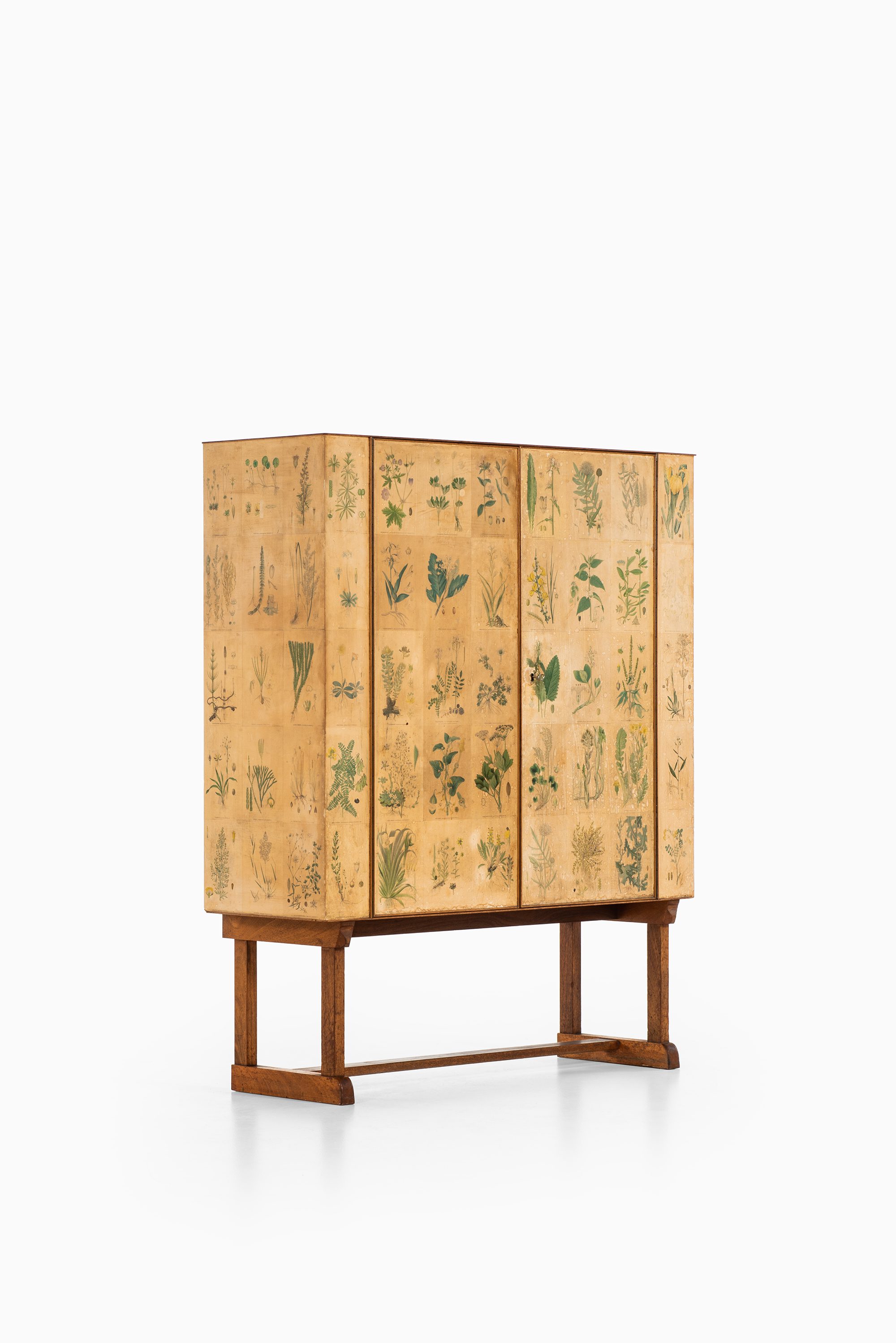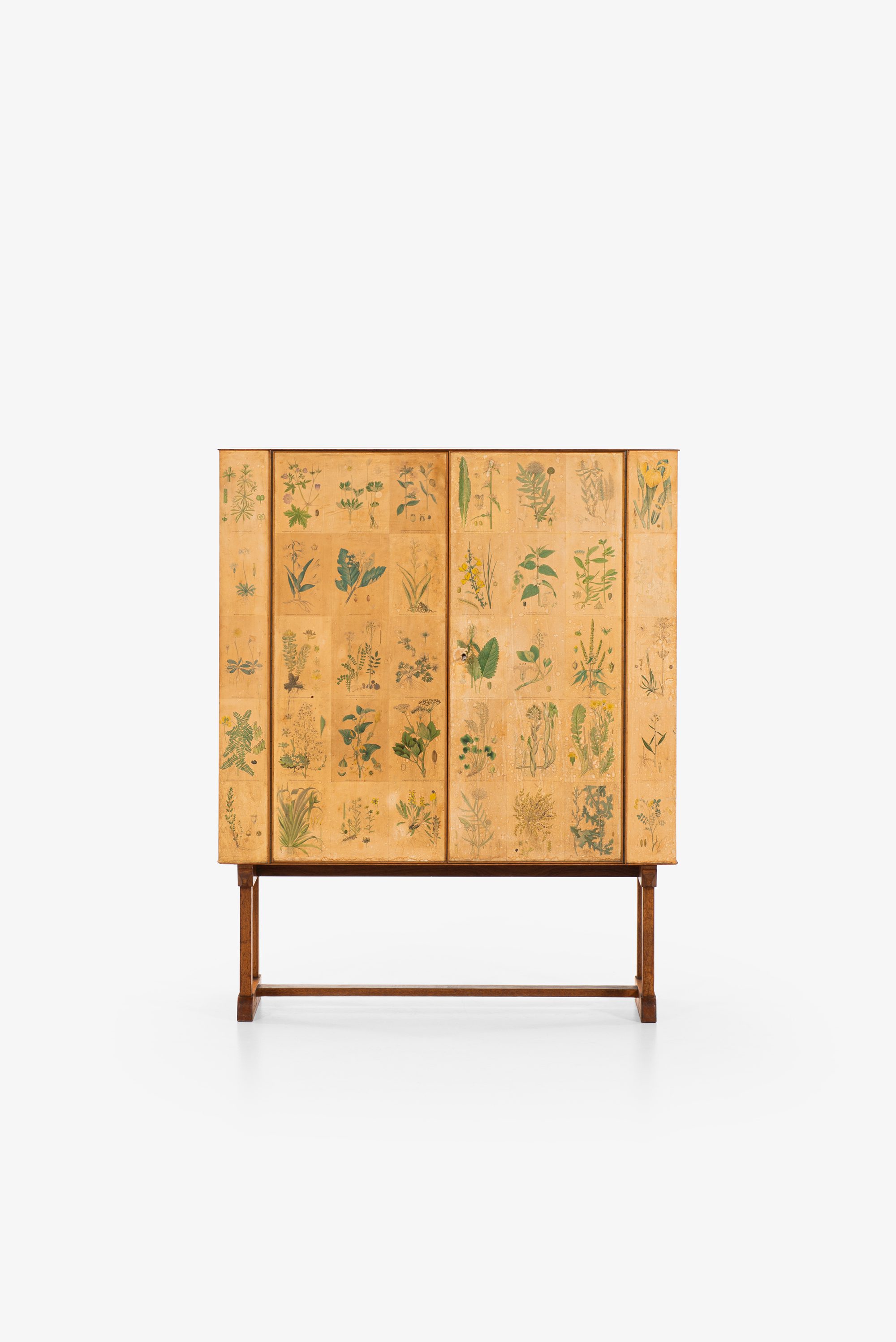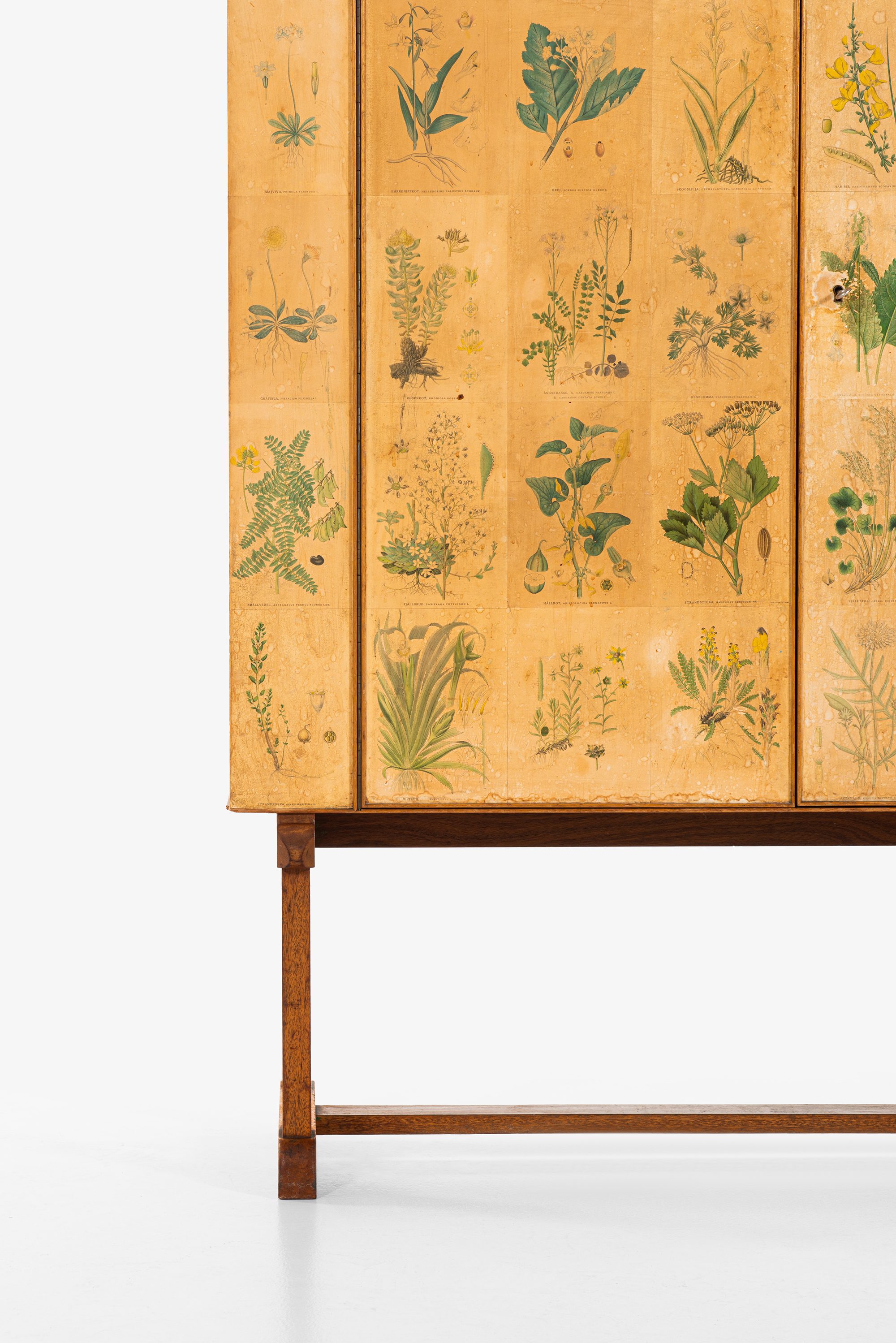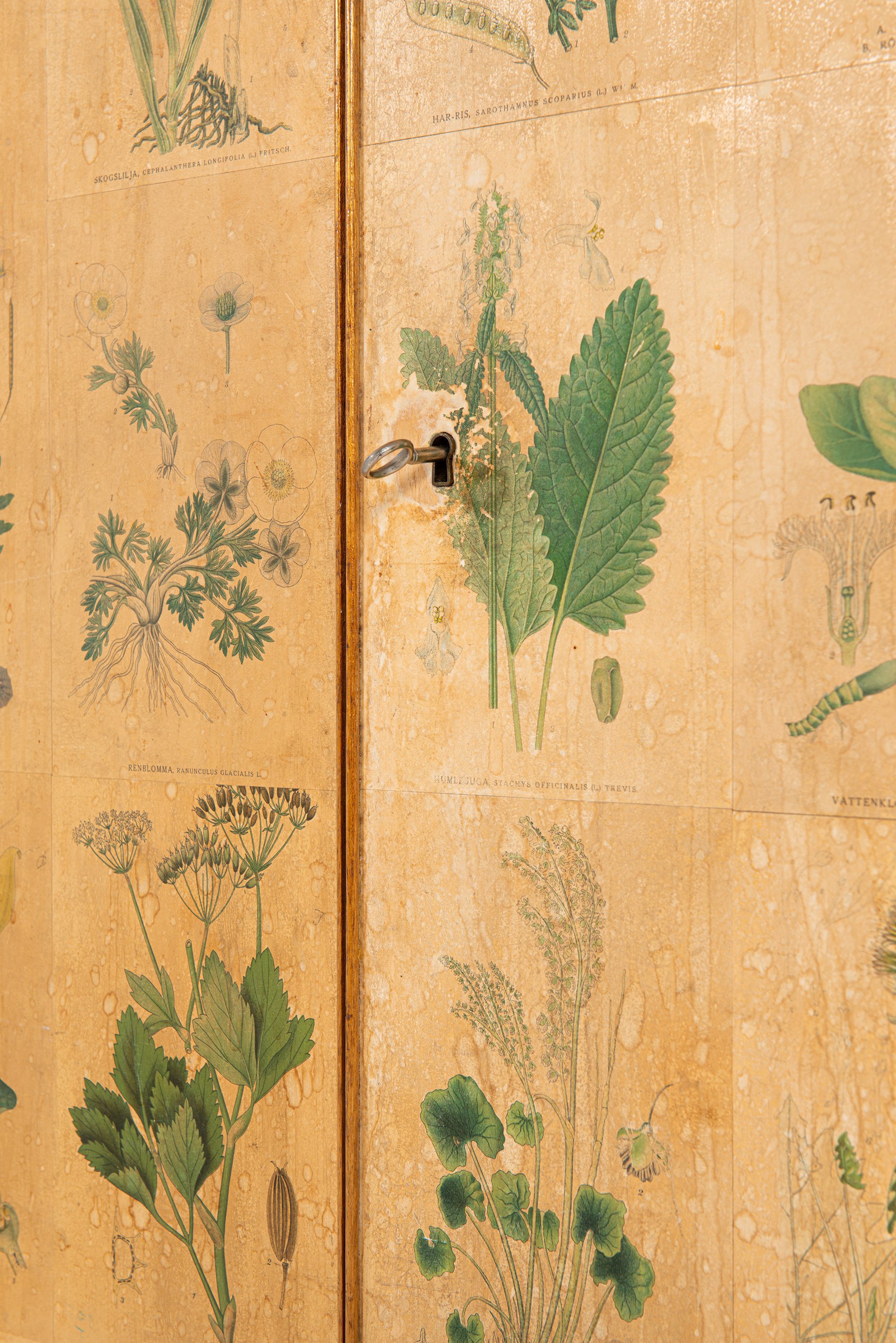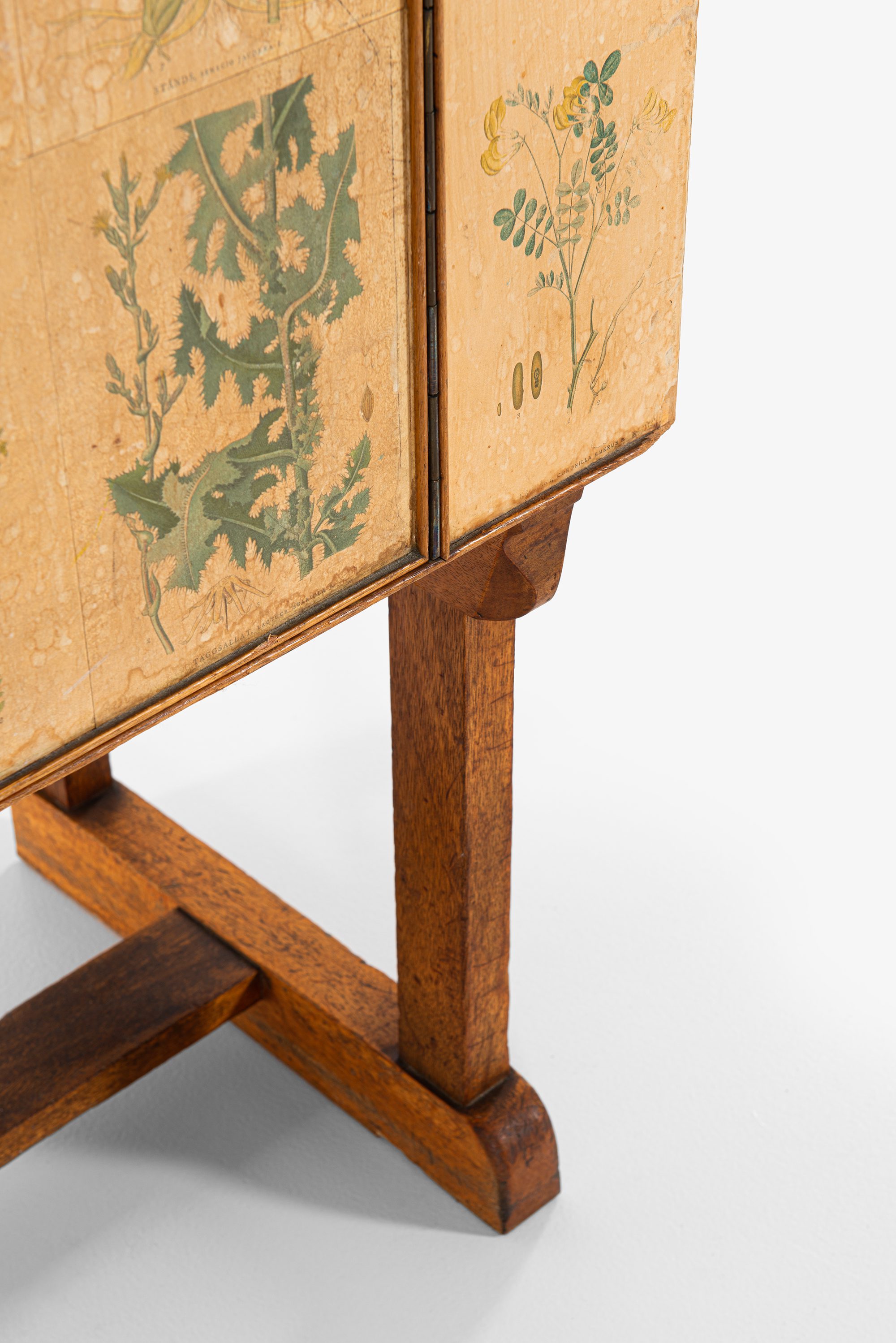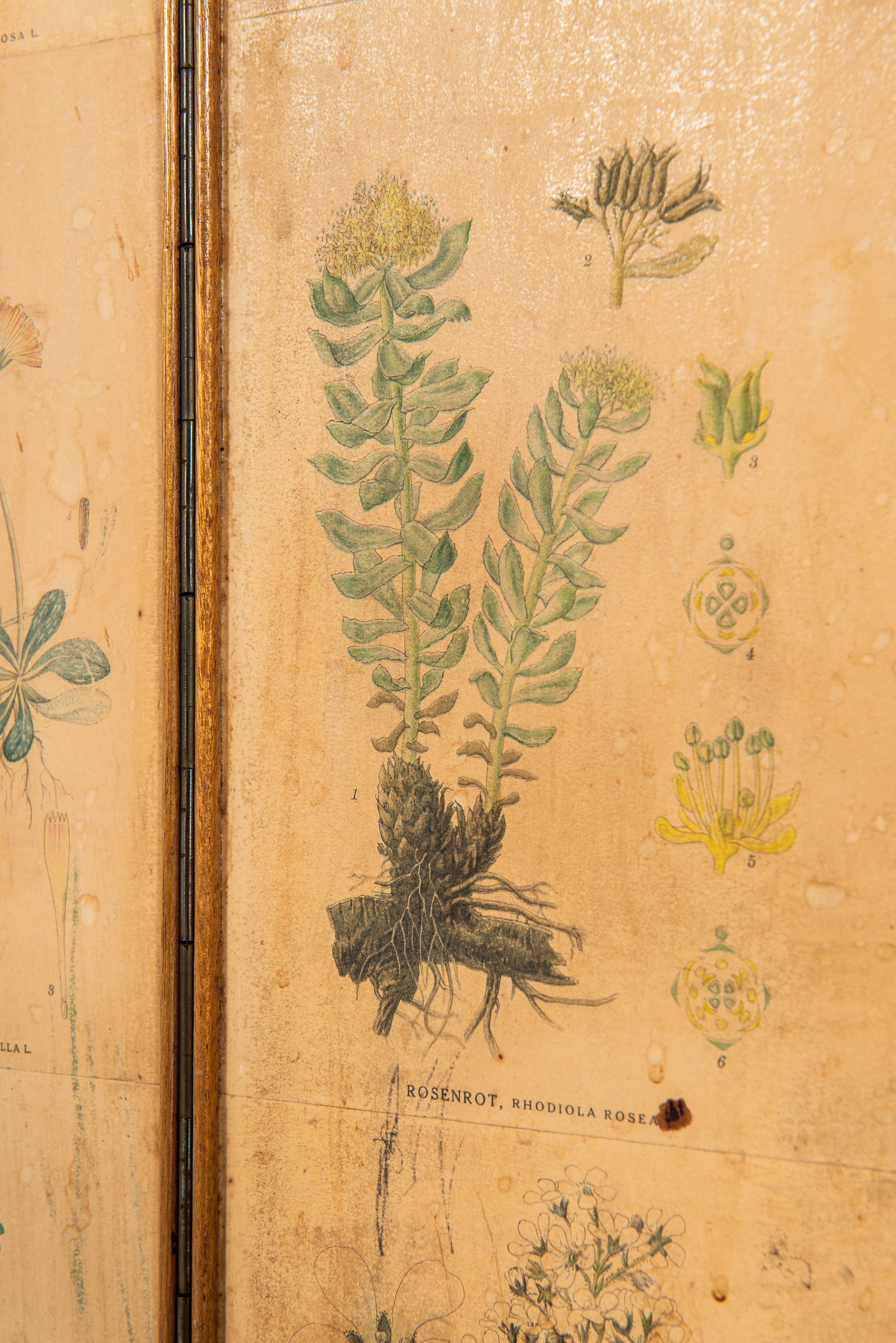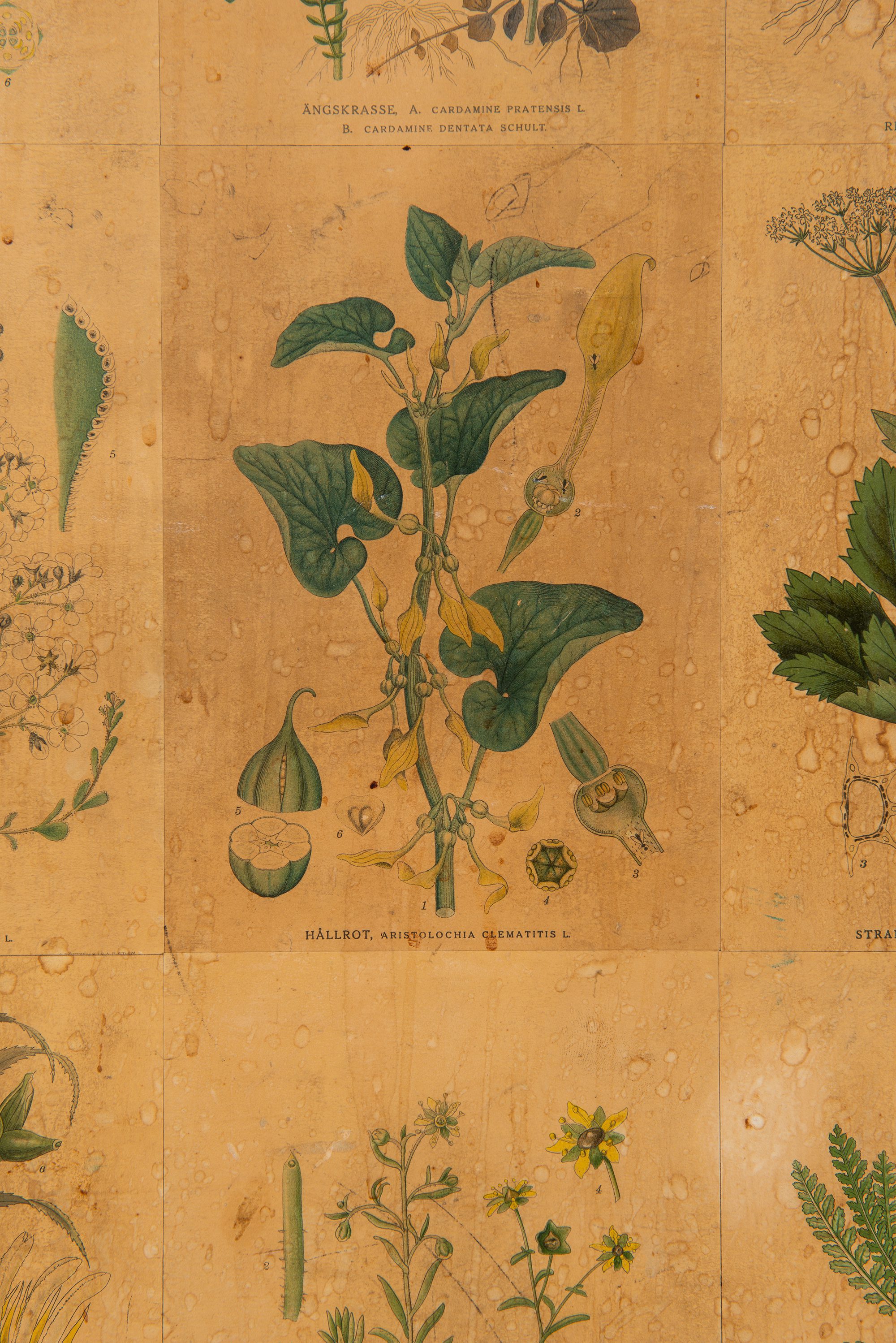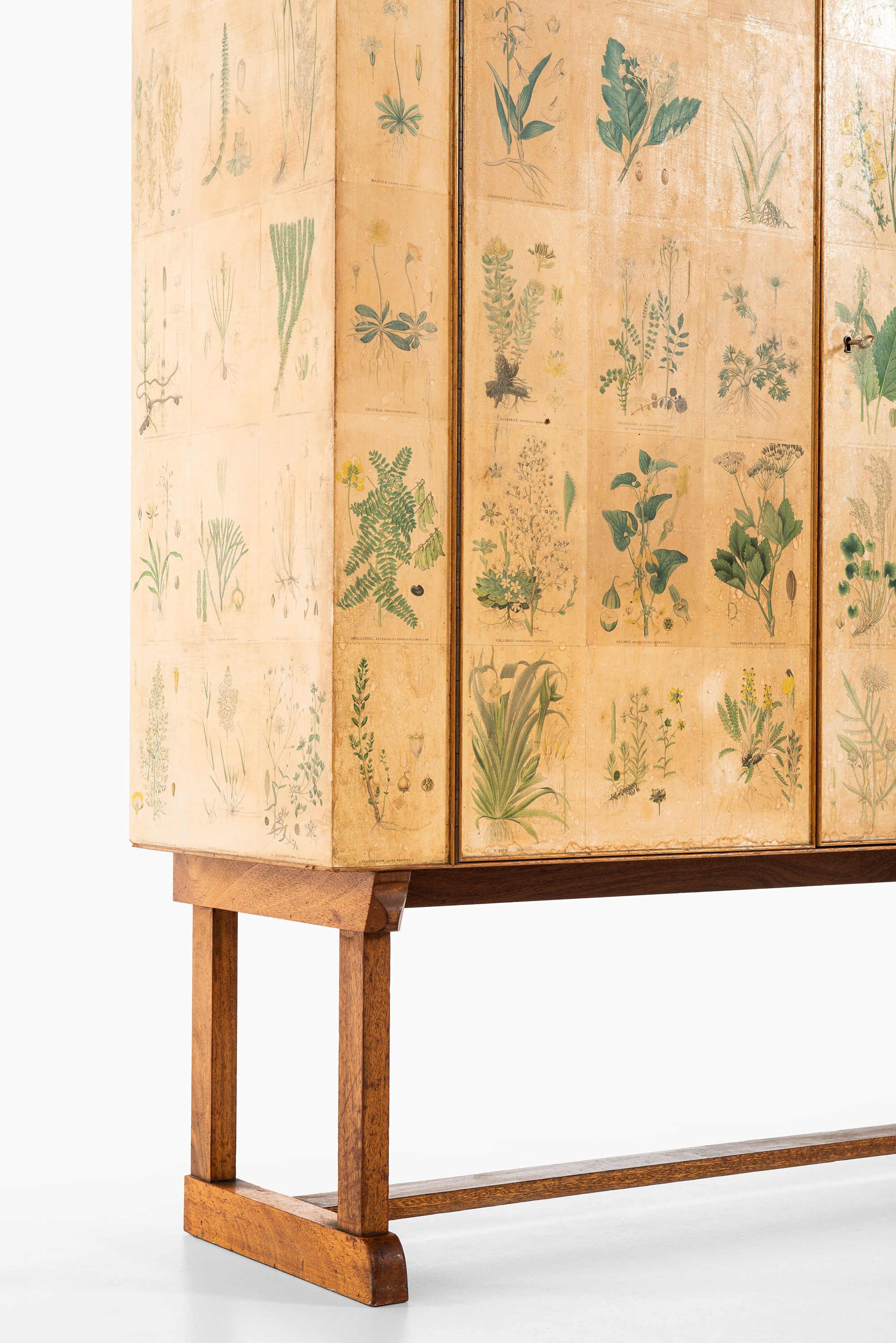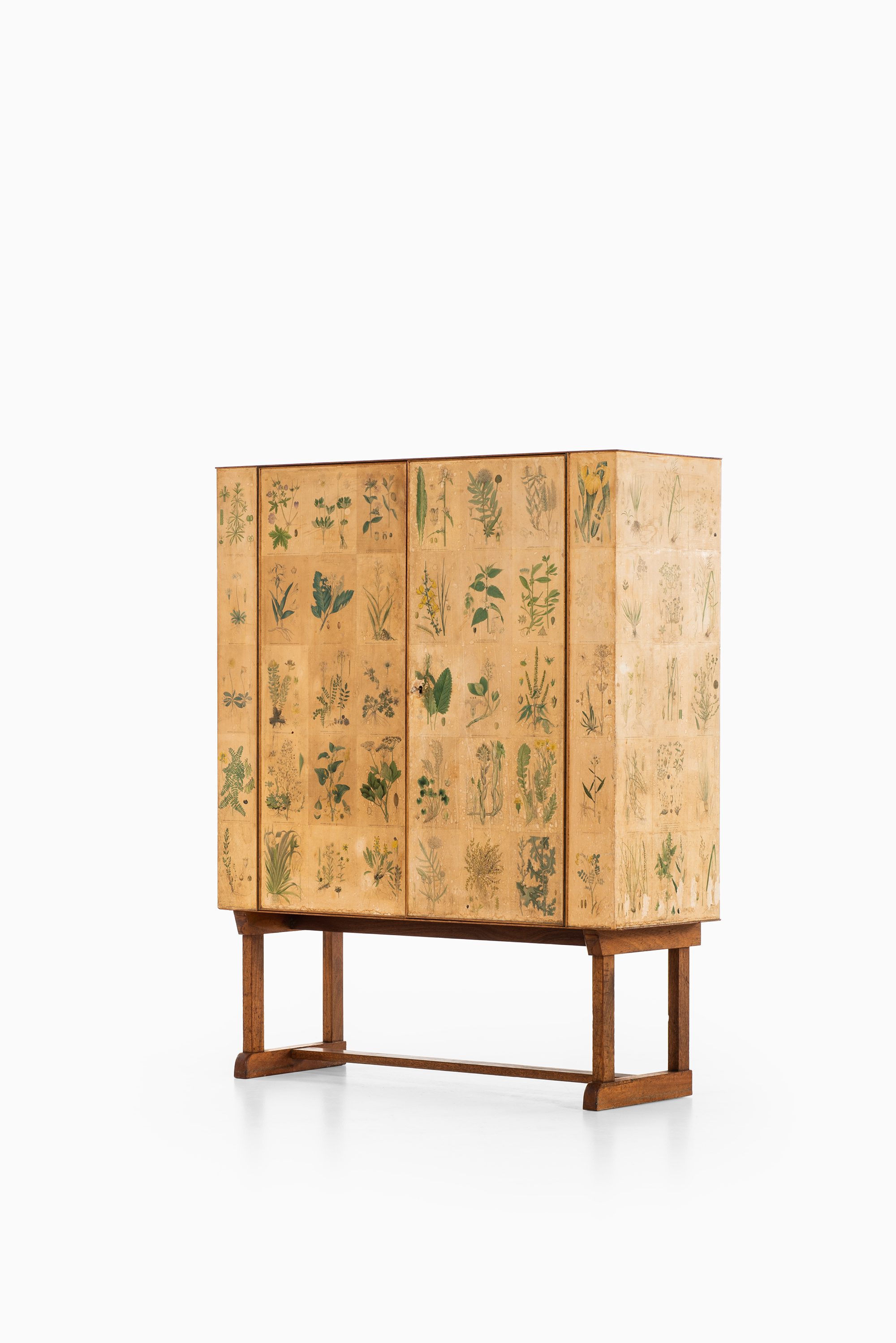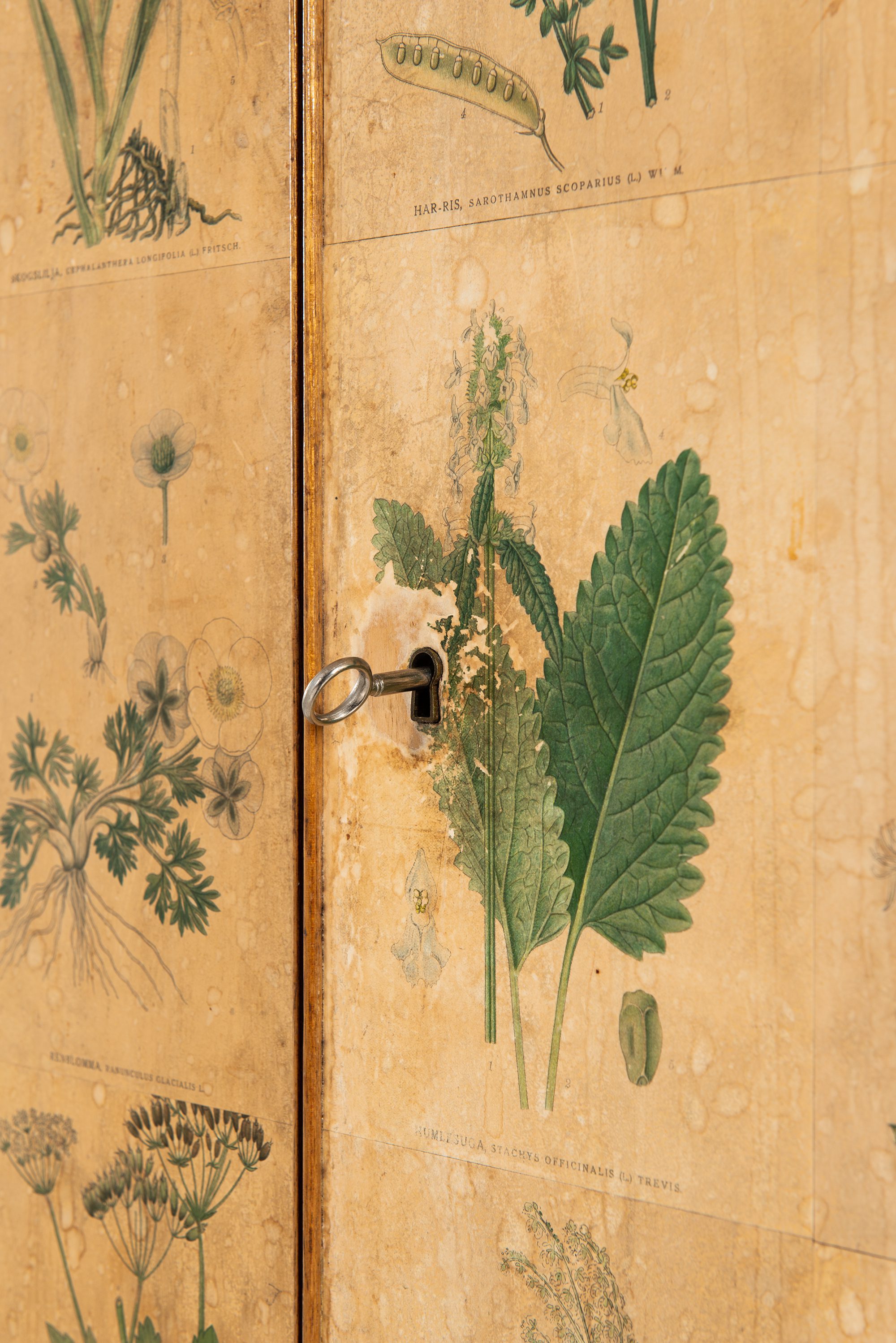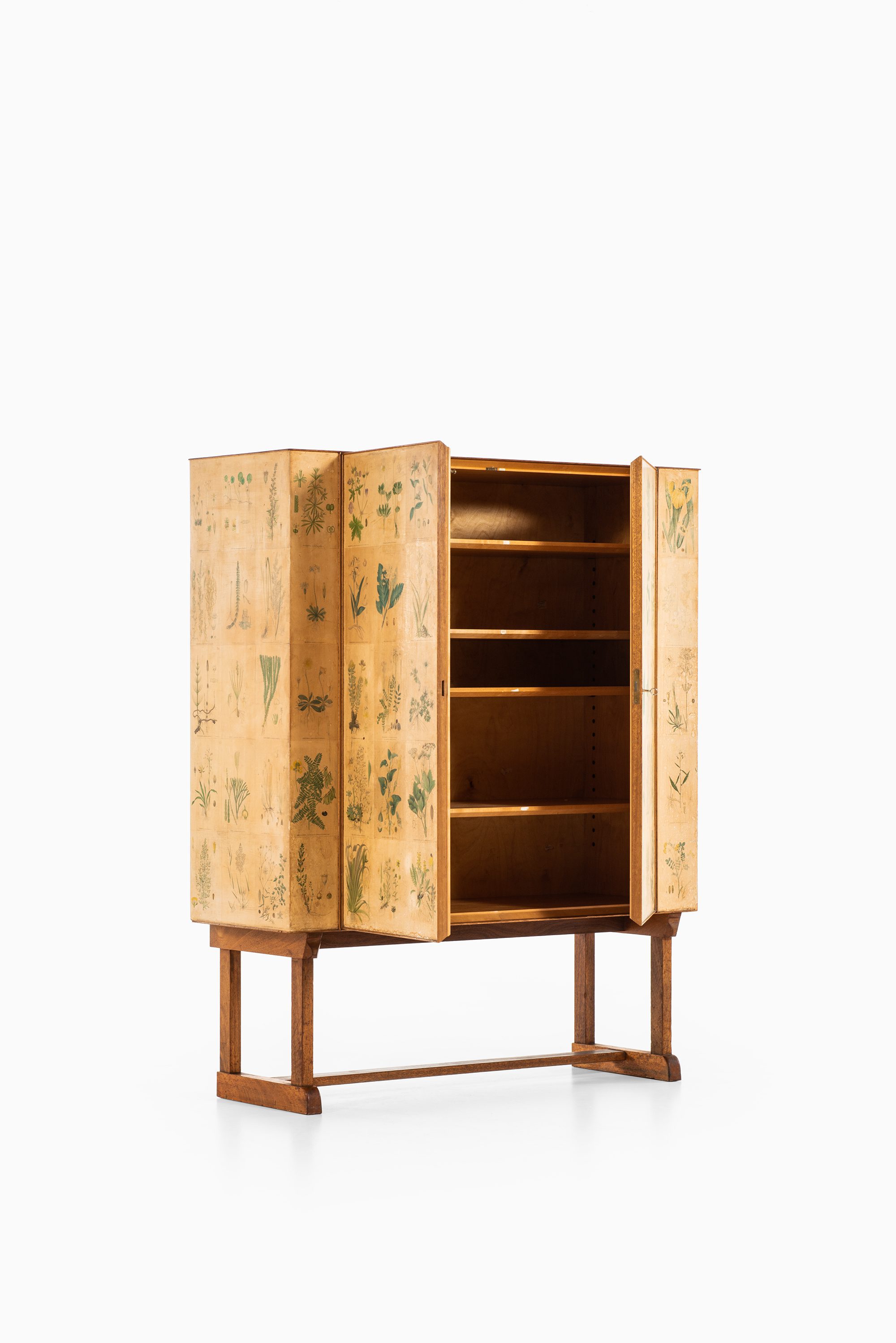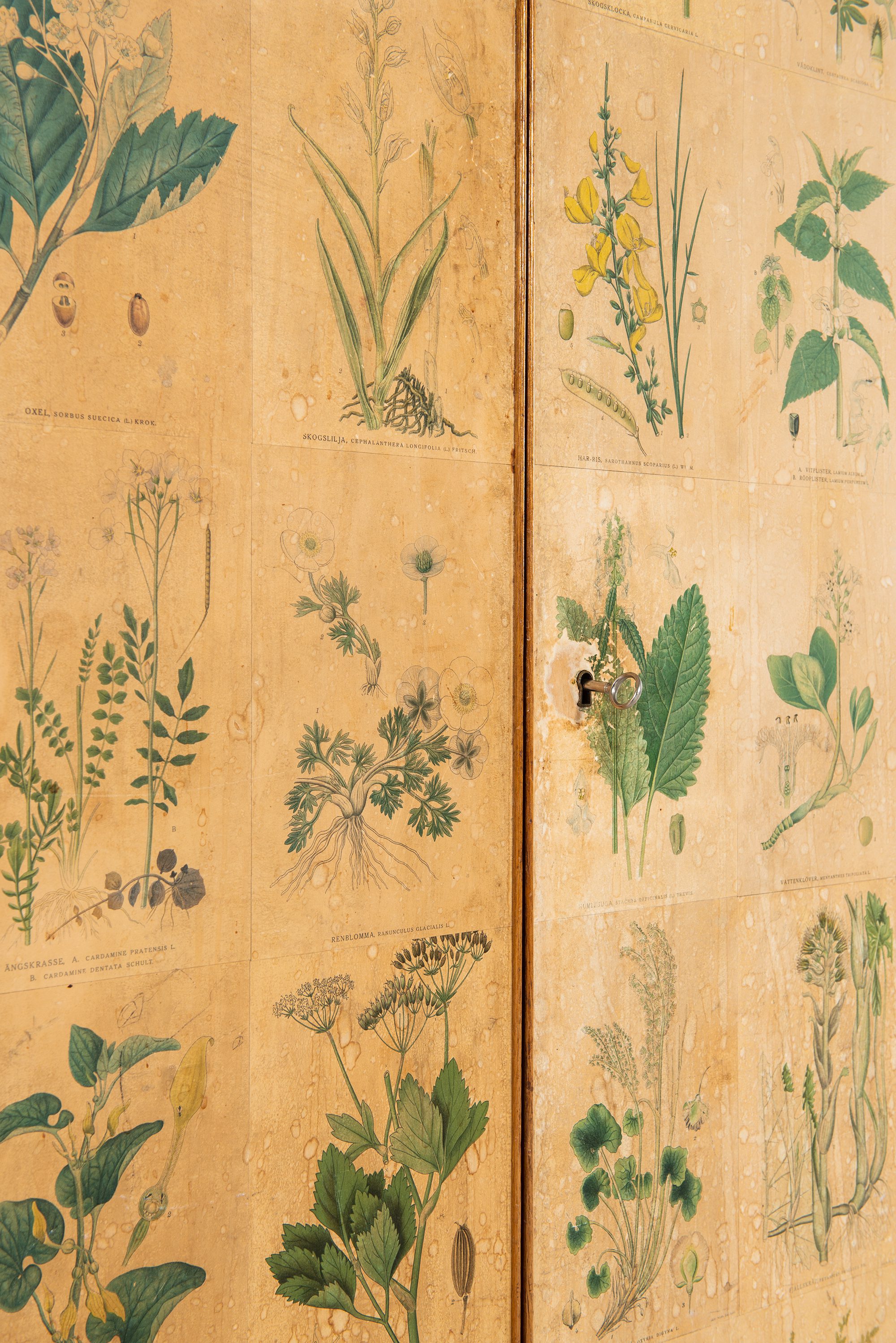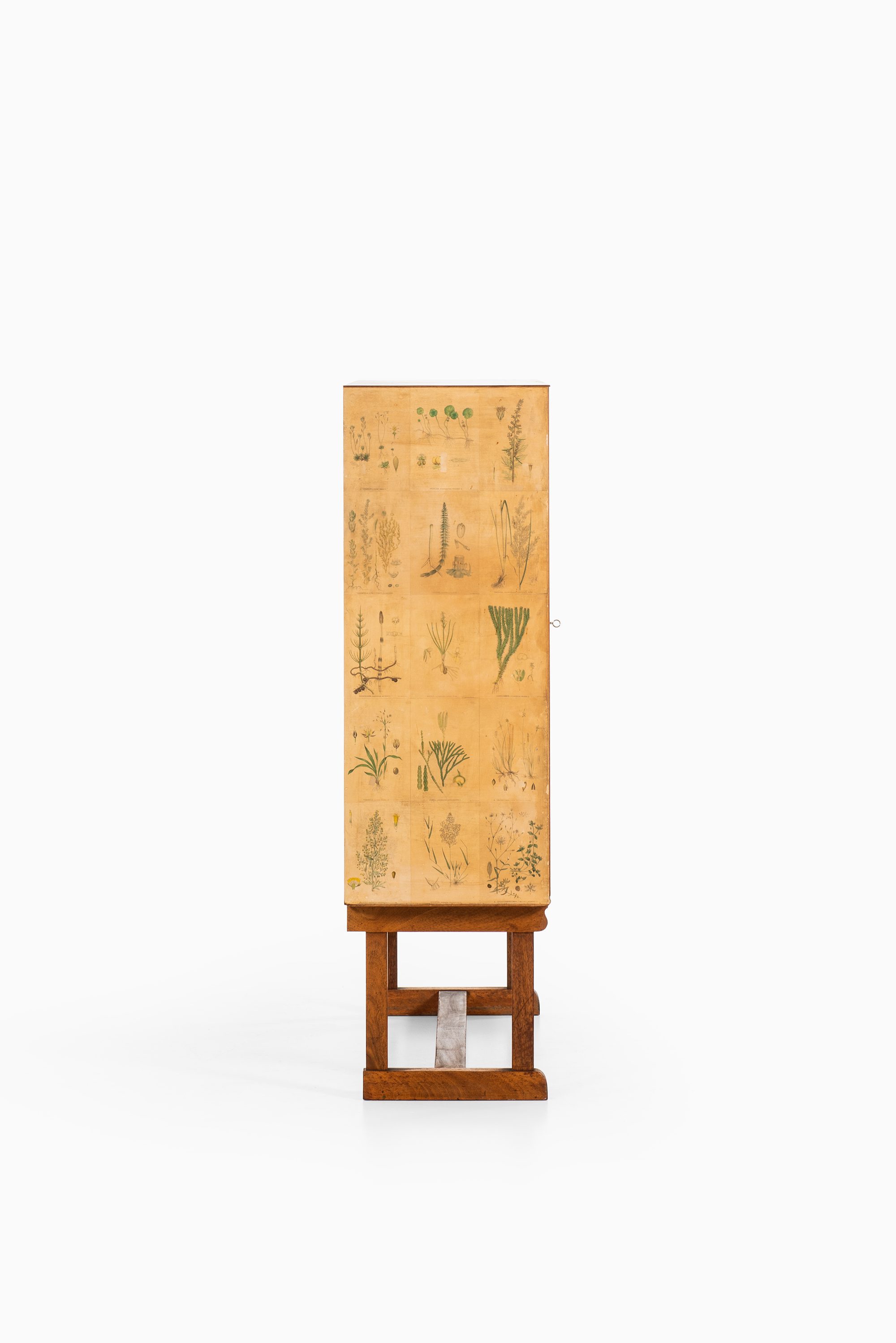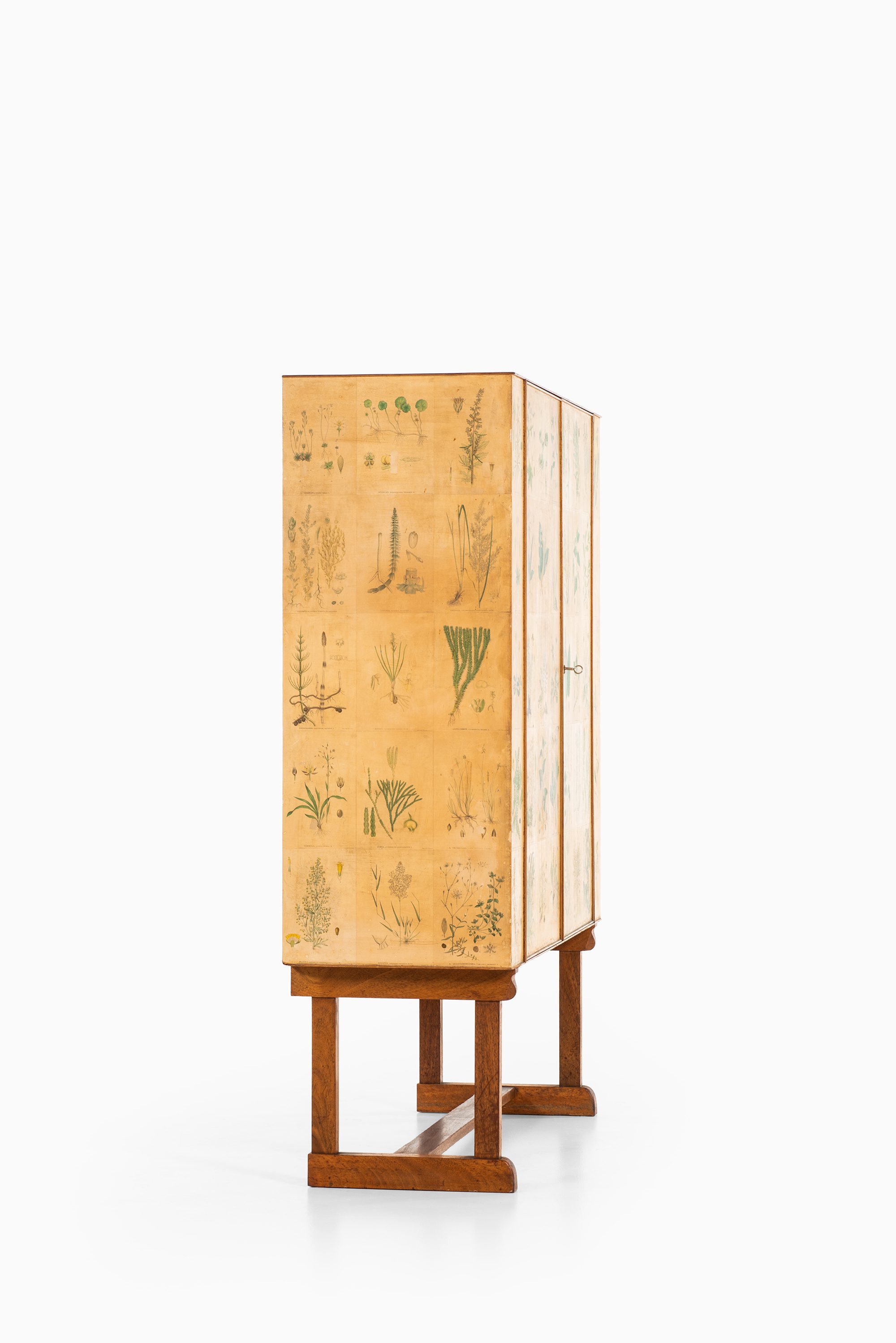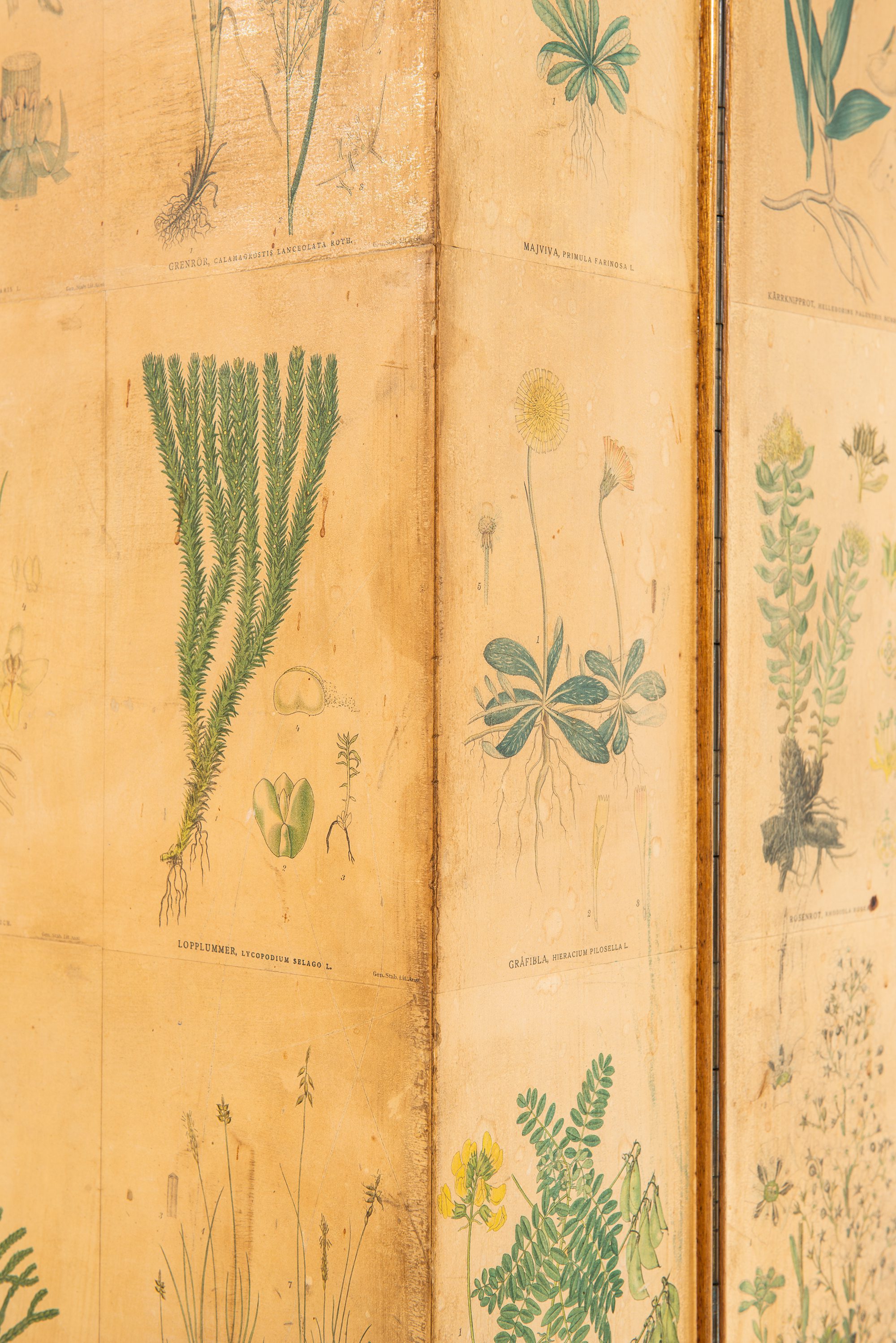Josef Frank Flora cabinet
This cabinet, model 852—also known as Flora—is an extremely rare and early first edition designed by Josef Frank in 1937 and produced by Svenskt Tenn in Sweden. The piece is notable not only for its historical provenance but also for its exceptional decorative treatment, which combines functional modernist cabinetry with richly illustrated surfaces. Its panels are covered in hand-colored botanical paper prints depicting various flora species, each annotated with Latin and Swedish plant names, referencing traditional botanical teaching charts and educational illustrations of the late 19th and early 20th centuries.
The cabinet’s structure is composed of a solid mahogany body, mounted on a carved and joined oak stand with flattened stretcher base construction. The rectilinear cabinet rests slightly elevated, giving it a light vertical posture despite its ample storage volume. The four legs are joined by a cross brace that provides structural reinforcement while visually grounding the composition. The doors, fitted with a simple keyhole lock and minimal metal hardware, swing open to reveal adjustable shelving in natural wood veneer, indicating its intended versatility for storage and display.
Josef Frank, an Austrian-born architect and designer who emigrated to Sweden in the 1930s, created the Flora cabinet as part of his broader vision for humane modernism. His work at Svenskt Tenn broke away from the stark rationalism of the Bauhaus, favoring warmth, individuality, and a celebration of nature. This cabinet encapsulates his philosophy: it is modern in form but romantic in surface treatment, evoking the atmosphere of a cabinet of curiosities or a scientific specimen archive, blending ornament with order.
The decorative paper applied across the surfaces shows signs of age and patina, including staining, discoloration, and irregular foxing throughout. These visual traces reinforce its authenticity and rare early production status. The coloration remains vivid in many areas, with greens, yellows, and fine ink lines intact, lending a layered graphic richness to the cabinet’s otherwise restrained geometry.
The piece remains in good vintage condition with evident signs of use and time. The structural integrity is preserved, and all elements—including hinges, doors, and interior fittings—are operational. The hand-colored finish, though heavily patinated, enhances its unique and archival character.
Dimensions are 120 cm wide, 43 cm deep, and 149 cm high (47.2 x 16.9 x 58.7 inches).
Dimensions (cm) | W: 120 / D: 43 / H: 149 |
| Producer | Svenskt Tenn |
| Decade | 1930s |
| Country | Sweden |
| Style | Scandinavian Modern |
| Material | Mahogany, Oak, Paper |
| Designed in | 1937 |
| Item Number | 119565 |
Josef Frank
Josef Frank (1885–1967) was an Austrian-born architect, furniture designer, and textile artist who became a central figure in Swedish modernism. He is best known for his vividly patterned textiles and distinctive approach to furniture and interi...
Read more